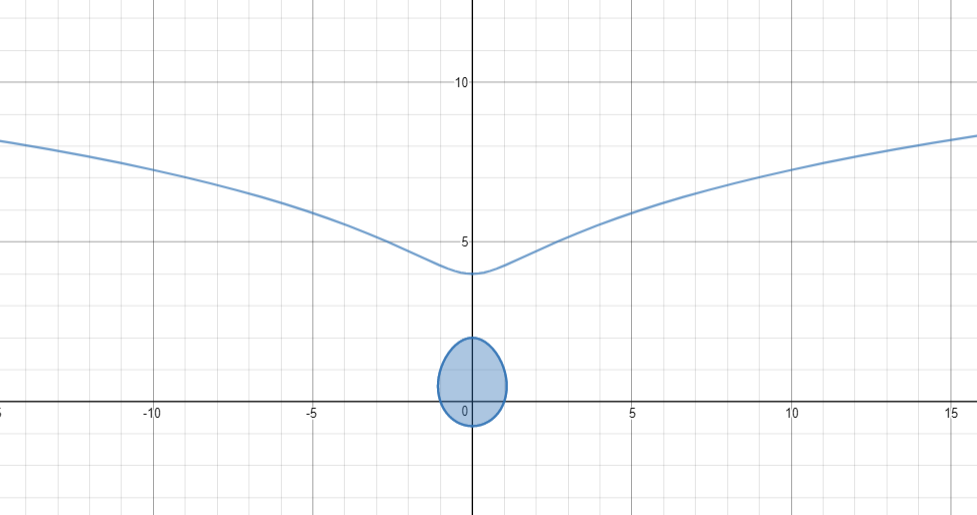How does one find the area of this?

Hello everyone! The relation of the image above is . How do you find the area of the egg shape?
*Note: There is a section above the droplet, which should not be accounted for.
Made with Desmos graphing calculator
No vote yet
1 vote
Easy Math Editor
This discussion board is a place to discuss our Daily Challenges and the math and science related to those challenges. Explanations are more than just a solution — they should explain the steps and thinking strategies that you used to obtain the solution. Comments should further the discussion of math and science.
When posting on Brilliant:
*italics*or_italics_**bold**or__bold__paragraph 1
paragraph 2
[example link](https://brilliant.org)> This is a quote# I indented these lines # 4 spaces, and now they show # up as a code block. print "hello world"\(...\)or\[...\]to ensure proper formatting.2 \times 32^{34}a_{i-1}\frac{2}{3}\sqrt{2}\sum_{i=1}^3\sin \theta\boxed{123}Comments
A different question about this graph: Consider graphs of the form x2+y2=ay. If a=2, the graph is as above. If a=2.09, the egg shape is now connected to the upper segment of the graph but if a=2.08, the egg shape is still distinct. Therefore, at what value of a does this egg first connect to the upper part of the graph?
Log in to reply
Actually, that question has a precise answer: a=e2/e≈2.0871.
x2+y2=ay.
At the transition point, the tip of the "egg" and the dip in the rest of the graph meet each other; due to symmetry, this must happen somewhere on the line x=0, and the connection will have a vertical tangent. Thus we set dx=0 in the total derivative and substitute ay=y2:
2xdx+2ydy=(lna)aydy 2y=(lna)ay=(lna)y2. lna=y2 ∴ a=e2/y.
Now substitute x=0 and this result in the original equation: y2=ay=(e2/y)y=e2; y=e, a=e2/e.
Log in to reply
You can also generalize this solution for graphs of the form x2n+y2n=ay. The general solution for the critical a is a=ee2n
whfhbbjwhf
Log in to reply
kjkjnklj
Log in to reply
jnlkn
Log in to reply
kn kjn
SVC
It is approximately 2.316, but I think you will have to resort to numerical integration as I did. Formally, we have A=∫−c222y−y2dy, where c≈0.767>0 is such that (21)c=c2; however, there is no hope to solve this integral algebraically.